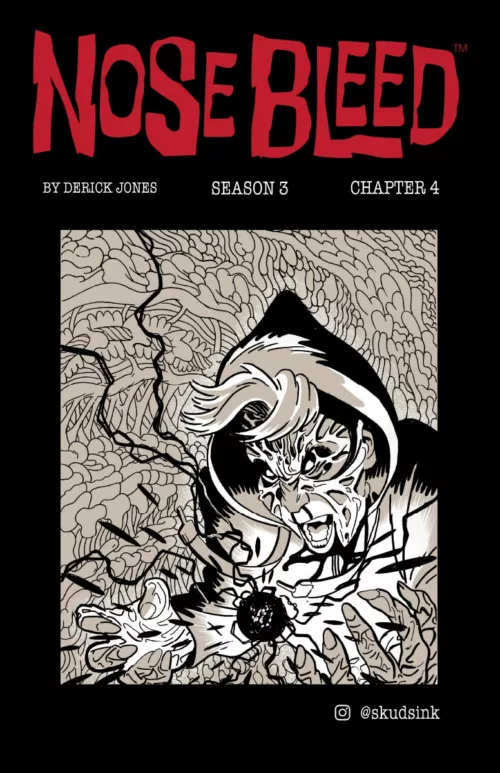
I stopped at Rosenfeld Gallery to see the Susan Pasquarelli work and walked in on a conversation between the gallery’s eponymous Richard Rosenfeld and Paul Stankard on gay marriage. I don’t know who said what because I was looking at the art (one pro, one anti the word “marriage” but not the permanent union).
Pasquarelli paints beautiful gouache on paper work with glowing colors.
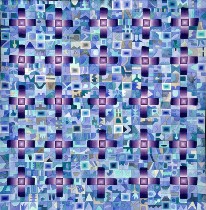 What appealed to me most were the newer pieces with stelae-like forms, which suggested something dark and thoughtful and the small, landscapy watercolors, with their obsessive dotty dashes (no stelae or dotty watercolors shown here, alas).
What appealed to me most were the newer pieces with stelae-like forms, which suggested something dark and thoughtful and the small, landscapy watercolors, with their obsessive dotty dashes (no stelae or dotty watercolors shown here, alas).
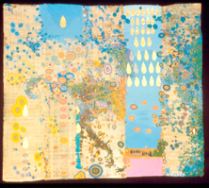 All the work (including a blue quilt-like piece, shown) seemed to have a meditative, repetitive mark-making quality that brought to mind the work of Diane Pieri (shown, her “Symbolic Landscape”), also an artist Rosenfeld carries.
All the work (including a blue quilt-like piece, shown) seemed to have a meditative, repetitive mark-making quality that brought to mind the work of Diane Pieri (shown, her “Symbolic Landscape”), also an artist Rosenfeld carries.
Stankard said “Beautiful work,” to open the conversation with me and then he made sure I admired his pieces, which were also on display.
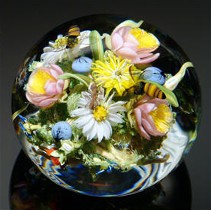 Stankard is a master of over-the-top glass paperweights (shown, a typical piece, “Tea Rose Cluster With Figures”) with floral arrangements inside. Originally a glassmaker who created lab equipment for scientists, upon seeing the French paperweights with single flowers inside, Stankard was inspired. He modified the same flamework technique he was using for scientific glass to make the flowers and then he cast them in the glass. The rest is history.
Stankard is a master of over-the-top glass paperweights (shown, a typical piece, “Tea Rose Cluster With Figures”) with floral arrangements inside. Originally a glassmaker who created lab equipment for scientists, upon seeing the French paperweights with single flowers inside, Stankard was inspired. He modified the same flamework technique he was using for scientific glass to make the flowers and then he cast them in the glass. The rest is history.
On one hand, I admired the technique. On the other, the work’s got a kitschy quality that made me laugh, with bees as well as buds. The prices, however, are anything but kitsch. $8,000. Oh la la. Nice corporate farewell gift, dontcha think?
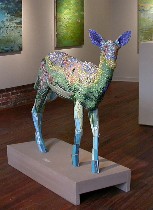 I did like a couple of pieces of mosaic animal sculptures (deer shown) by Jonathan Mandell (he did some mosaic work for the new baseball stadium) embedded with an array of glass, shells, jewels and rocks. The critters seemed kind of outsidery–and perfect for outside spaces, besides.
I did like a couple of pieces of mosaic animal sculptures (deer shown) by Jonathan Mandell (he did some mosaic work for the new baseball stadium) embedded with an array of glass, shells, jewels and rocks. The critters seemed kind of outsidery–and perfect for outside spaces, besides.
All in all, I was glad I stopped in.
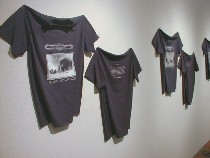 The other work I especially enjoyed was Matt Pruden’s installation at Nexus, a glimpse of which he had offered a couple of months ago in the Window on Broad Street. The highlights, here, were the tee shirts, the hand-painted postcards, and the whited-out maps, which brought into modern terms a kind of obscure concept about the culture that inspired British gentleman-explorers to risk their lives and others’ for fame and for the Crown.
The other work I especially enjoyed was Matt Pruden’s installation at Nexus, a glimpse of which he had offered a couple of months ago in the Window on Broad Street. The highlights, here, were the tee shirts, the hand-painted postcards, and the whited-out maps, which brought into modern terms a kind of obscure concept about the culture that inspired British gentleman-explorers to risk their lives and others’ for fame and for the Crown.
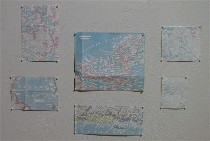 The tee shirts, with photos from arctic exploration, reminded me of rock-concert memorabilia and other promotional material, and the postcards also brought me to advertising. Welcome to sunny Antarctica! As for the maps without place names, they were reminders of the imperialism implied in the naming of places as well as the loss of naming rights in death.
The tee shirts, with photos from arctic exploration, reminded me of rock-concert memorabilia and other promotional material, and the postcards also brought me to advertising. Welcome to sunny Antarctica! As for the maps without place names, they were reminders of the imperialism implied in the naming of places as well as the loss of naming rights in death.






